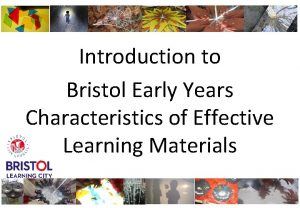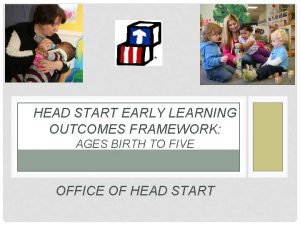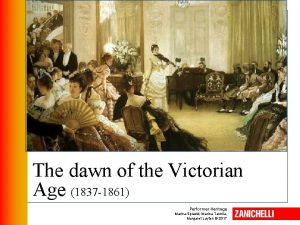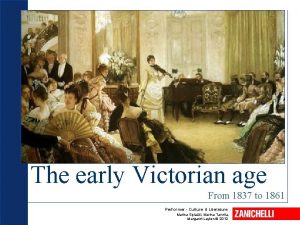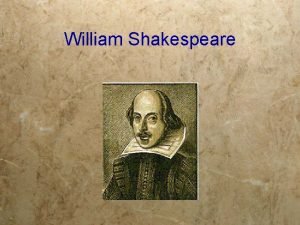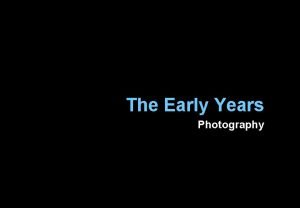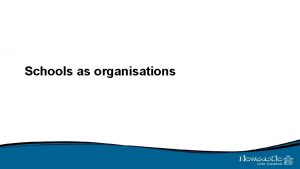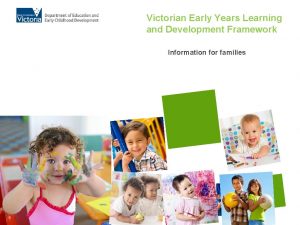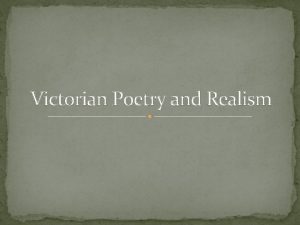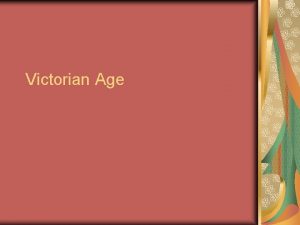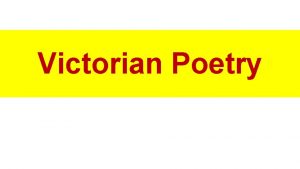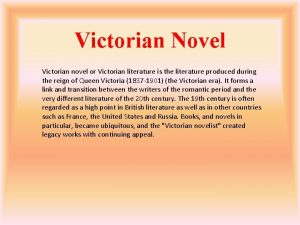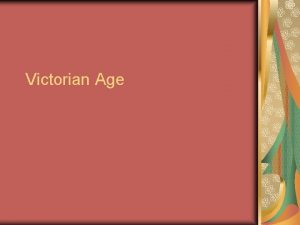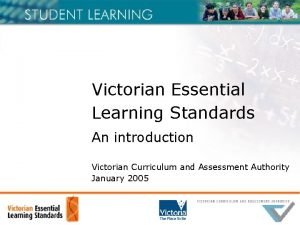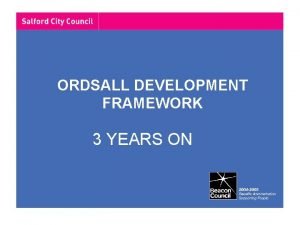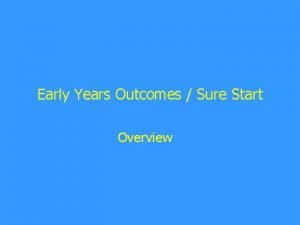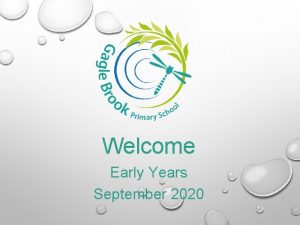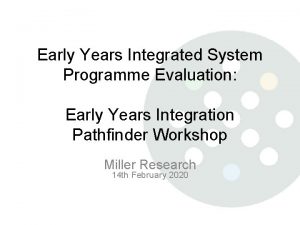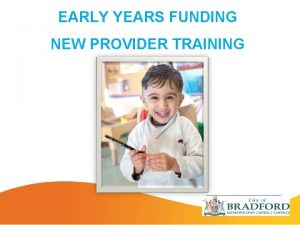Victorian Early Years Learning and Development Framework Information














- Slides: 14

Victorian Early Years Learning and Development Framework Information for families

What is the Victorian Early Years Learning and Development Framework? • A document which describes what children should learn between the age of birth and eight years • Outlines early childhood professionals will work together, and with families, to support children’s learning.

What is it all about? The Framework aims to highlight the importance of: – Play based learning – Professionals talking to each other – Recognising that all children learn in different ways and at different rates and times – Families as their child's first teacher. Families understand their children better than anyone else.

Why is there an Early Years Learning and Development Framework? • Research tells us: – The first eight years of a child’s life is when they do their most important learning – This time should be full of play and opportunities to explore the world around them – From birth, learning and development at each stage of life forms the building blocks for the next.

What does it say about learning? The Framework identifies five learning outcomes for all children from birth to eight years. These outcomes have a broad view of the kind of knowledge and skills all children need for them to become confident and happy through their life.

Outcome 1: Children have a strong sense of identity Having a strong sense of identity means that children can: – build secure relationships with friends, family and other people in their lives – interact with others in a constructive and respectful way – reach out and communicate their needs for comfort and assistance

Outcome 2 Children are connected with and contribute to their world Being connected with and contributing to the world means that children can: • explore their world by making new friends • learn about fairness and how to live independently and with other people • understand the natural environment

Outcome 3 Children have a strong sense of wellbeing Having a strong sense of wellbeing means that children: • have good mental and physical health • are confident • understand the benefits of strong social, emotional and spiritual wellbeing

Outcome 4 Children are confident and involved learners Being a confident and involved learner means that children: • Enjoy learning • Are curious, confident and creative • Show persistence to keep trying • Use their imagination to solve problems • Can use technologies to find new information

Outcome 5 Children are effective communicators Being an effective communicator means that children: • Interact verbally and non-verbally with other people • Enjoy reading and being read to • Enjoy singing, talking, counting and rhyming • Can see patterns in numbers and shapes

How early childhood professionals will support your child’s learning Early childhood professionals will: • Discuss your child’s learning with you • Ask advice from other professionals if they are concerned about your child’s learning • Respect your families values, beliefs and decisions • Recognise that all children can learn, but some children require additional help to learn • Use the most effective teaching strategies to support your child to learn

What can I do to support my child’s learning at home? Families are the most important people in supporting children’s learning and development. You can support your child’s learning at home by: • Reading to them • Encouraging them to ask questions • Playing singing and rhyming games • Encouraging their attempts at new things • Encouraging them to be involved in household activities • Encouraging them to talk and interact with others

What else can I do to support my child’s learning? There’s also a range of services you can access which have early childhood programs including: • • Local libraries Museums Local parks Maternal and child health service Playgroup Kindergarten and long day care Sporting organisations and; Specialist children’s services. If you have concerns about your child’s learning, you can talk to your early childhood educator or your maternal and child health nurse who can provide you with advice or a referral.

What can I do to support my child’s Transition to school? • If your child is beginning school, work with your child’s educator to complete a Transition Learning and Development Statement, for your child. This helps Prep teachers to get to know your child and plan their learning. http: //www. education. vic. gov. au/earlylearning/eyldf/
 Early years learning framework overview
Early years learning framework overview Bristol early years
Bristol early years Free form expression floral design
Free form expression floral design Greek floral design history
Greek floral design history Headstart early learning outcomes framework
Headstart early learning outcomes framework Four score and seven years ago is how many years
Four score and seven years ago is how many years Early victorian thinkers
Early victorian thinkers Early victorian age
Early victorian age Goat years to human years
Goat years to human years 300 solar years to lunar years
300 solar years to lunar years Early cpr and early defibrillation can: *
Early cpr and early defibrillation can: * Who was shakespeare
Who was shakespeare Early years photography
Early years photography Summarise types of early years provision
Summarise types of early years provision Medway early years
Medway early years

